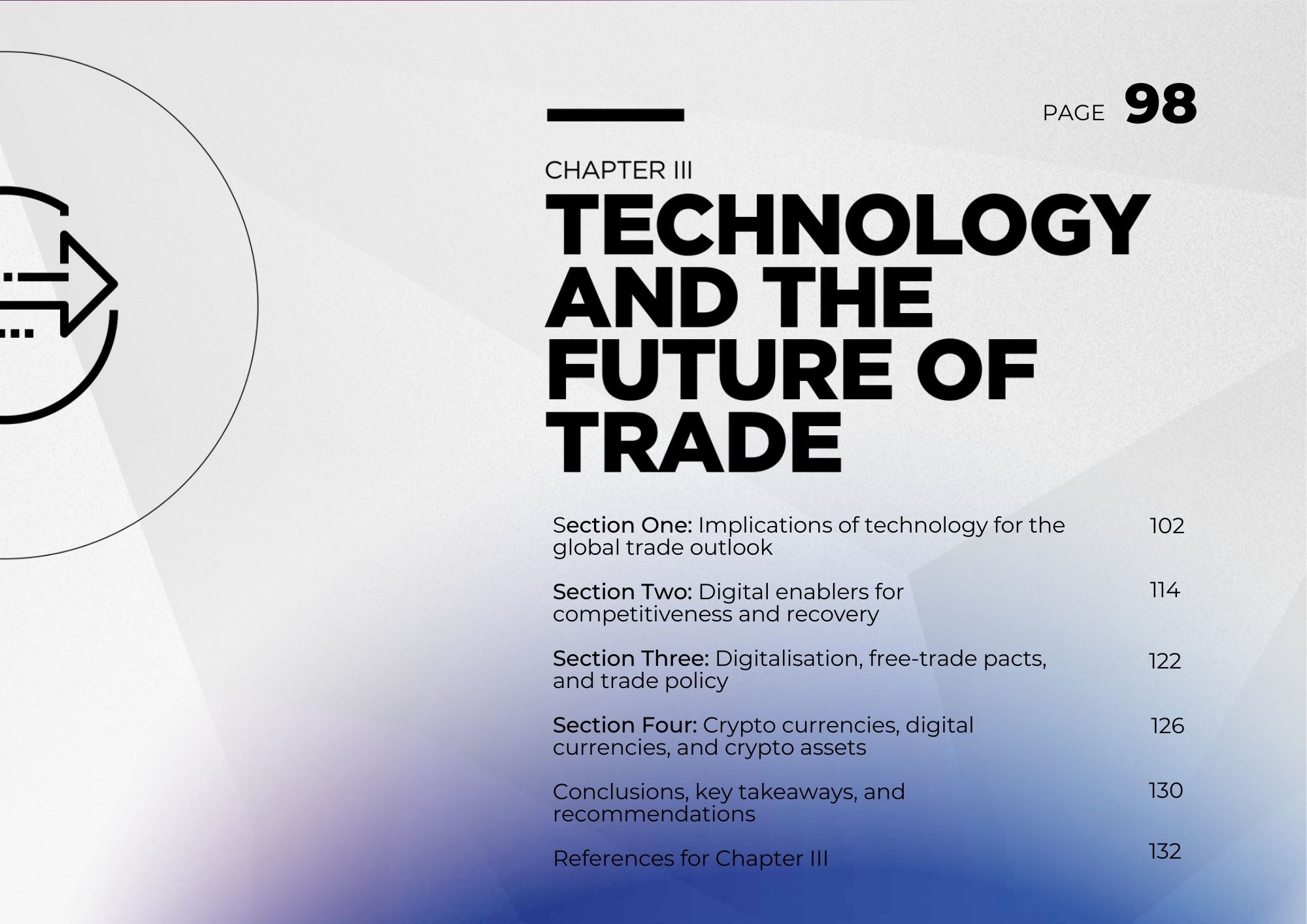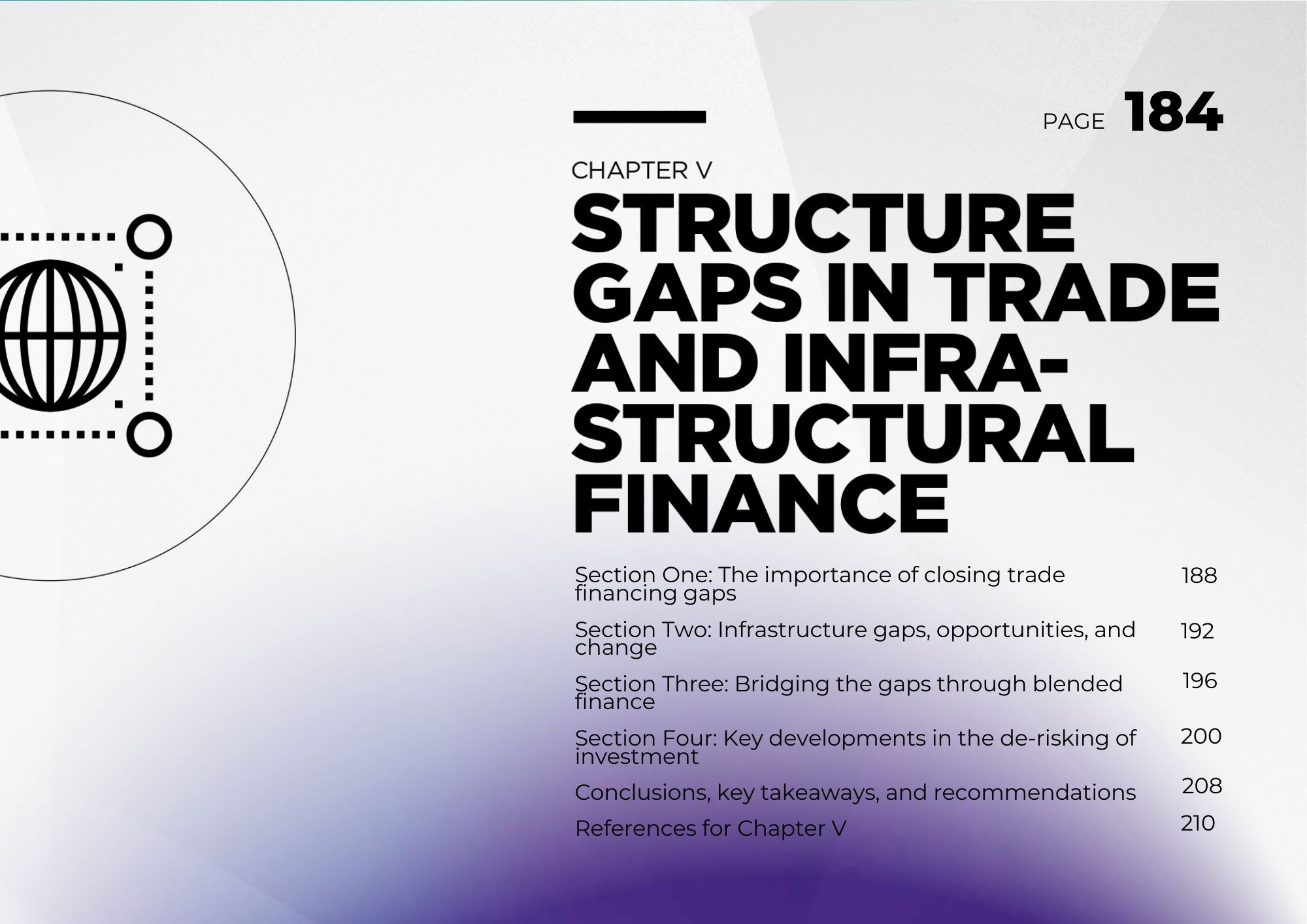The Future of Trade
The Future of Trade 2022 is the fourth edition of DMCC’s biennial flagship report on the changing nature of global trade. In it, we examine the impact of technology, global economic trends, and geopolitics on the future of trade, with a focus on trade growth, supply chains, trade finance, infrastructure, and sustainability.
THE FUTURE OF TRADE: THE OPPORTUNITIES AHEAD
The report presents updated scenarios for how trade will develop in 2022 and beyond, relevant for any reader involved in trade, trade policy, international investment, and the operation of businesses with global value chains.
This fourth edition frames world trade’s capacity to drive global recovery as economies continue to open up after the COVID-19 pandemic. The analysis will look at multiple long-term recovery scenarios, both optimistic and pessimistic, many of them predicated on underlying issues such as trade finance, digitalisation, and infrastructure. The picture is still mixed when assessing the political will of governments to de-risk investments into such areas as the global economy recovers.
Geopolitics, as ever, will shape the trade landscape in 2022 and beyond. The report will discuss new developments in regionalism, bilateral trade, and global investment flows. US-China trade tensions constitute a continued risk to trade openness between the world’s two largest economies. In practice, US President Biden’s administration has embarked on a policy of ‘America First’ with a preference for ‘Ally-shoring’.1 Although not a base case scenario, the risk is that an extension of this type of policy in other countries could lead to a broader fragmentation of global trading relationships.




EXECUTIVE SUMMARY
At a time of conflict in Europe, geopolitical rivalry, inflationary pressures , and concerns over economic growth, global trade has an encouragingly positive story to tell that may not be immediately obvious.
Multiple underlying factors are likely to support cross-border trade in both 2022 and in the years ahead: an increasingly regional focus; strength in the services side of the trade; and digital innovation, especially in digital trade. Strategic geopolitical and climate considerations will also be supportive, while countries’ energy transitions will accelerate in both developed and developing economies, providing another boost to trade.
The upshot is that global trade growth is expected to remain resilient in 2022 despite some slowing in pace. The upward trajectory is likely to continue in the years ahead, but the shape of trade will change significantly. The world appears to be at the dawn of a new era of multilateralism, the features of which include regionalism, sustainable trade, and digital trade. The raft of new trade agreements and partnerships, including the recently launched Indo-Pacific Economic Framework for Prosperity (IPEF)2 and the UAE CEPA programmes, is encouraging for the future of trade. Digital transformation will need to be central to governments and the private sector as this will further drive and facilitate trade liberalisation.
In addition, the rise and increasing development of central bank digital currencies stands to reshape global finance, trade, and investment.
The drivers of lower trade barriers will increase over the next several years. Pandemic-induced protectionism in certain goods is costly and distortionary. Given this, there is likely to be a migration towards loosening barriers. This would boost specialisation and reduce trade costs. As trade openness increases, production in each economy tends to decouple from domestic demand. Increasing competition vis-à-vis foreign producers instigates specialization according to comparative advantage, lowering overall costs.


